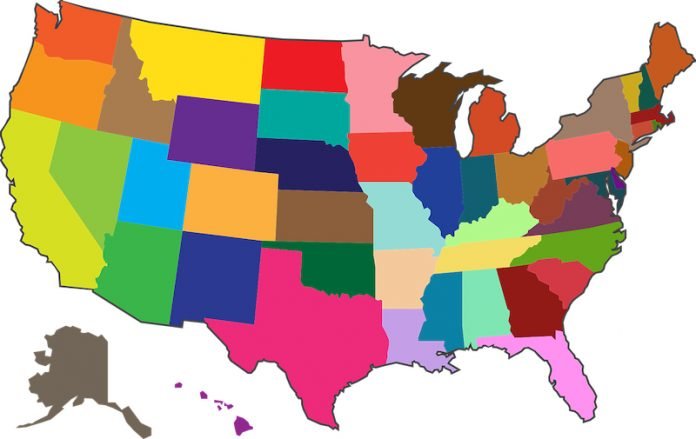
Could where you live dictate how long you live?
In a new study, researchers found Americans who live in so-called blue states tend to live longer than those in red states, primarily due to state policies.
They found U.S. state policies since the 1980s have cut short American lives, particularly for women.
U.S. life expectancy gains since 2010 would be 25% greater for women and 13% greater for men if state policies had not changed in the way they did, with many becoming more conservative.
Enacting more liberal state policies could raise U.S. life expectancy by over 2 years, whereas enacting more conservative state policies could reduce it by 2 years.
In the greatest gap between states, residents in Connecticut outlive their counterparts in Oklahoma by as many as seven years.
The research was conducted by a team at Syracuse University’s Maxwell School.
Americans die younger than people in other high-income countries. This gap in life expectancy between the U.S. and other countries emerged in the 1980s and has grown ever since.
Since that time, gaps in life expectancy between U.S. states also expanded.
For instance, between 1980 and 2017, life expectancy rose by just 2.2 years in Oklahoma (73.6 to 75.8 years) but 5.8 years in Connecticut (74.9 to 80.7 years).
Life expectancy in Oklahoma now falls between that of Serbia and Brazil, while Connecticut falls between Denmark and Costa Rica.
In the study, the team examined how state policy environments contributed to U.S. life expectancy trends from 1970 to 2014.
It used information on 18 policy domains such as abortion and guns, each measured on a liberal-to-conservative scale, for every state and calendar year.
The analysis then predicted U.S. life expectancy trends from all policy domains, controlling for characteristics of states and their residents.
The team found that Oklahoma and Connecticut differ in other ways. While these two states were diverging in life expectancy, they were also diverging in their policy orientation.
Oklahoma made one of the largest transitions toward a conservative state policy environment among all 50 states. Conversely, Connecticut made one of the largest transitions toward a liberal state policy environment.
This polarization in state policy environments has occurred across the U.S. and helps to explain the growing gap in life expectancy between states and the troubling trends in U.S. life expectancy since the 1980s.
Among the 18 policy domains studied, 10 strongly predict life expectancy. More liberal versions of those policies generally predict longer lives and more conservative versions generally predict shorter lives.
This is especially the case for policies on tobacco, immigration, civil rights, labor (e.g., Right to Work laws, minimum wage), and the environment.
This finding reflects the reality that state policies such as minimum wage, EITC, abortion laws, and Medicaid are more relevant for women’s than men’s lives.
If all 50 states enacted either liberal or conservative policies, what would happen to U.S. life expectancy?
The team says if all states enacted liberal policies across the 18 domains, our study estimated that U.S. life expectancy would increase by 2.8 years for women and 2.1 years for men.
However, if all states enacted conservative policies, U.S. life expectancy would decline by 2.0 years for women and 1.9 years for men.
If all states followed current national policy trends, there would continue to be little improvement in life expectancy.
One author of the study is Jennifer Karas Montez, a sociology professor.
The study is published in Milbank Quarterly.
Copyright © 2020 Knowridge Science Report. All rights reserved.



